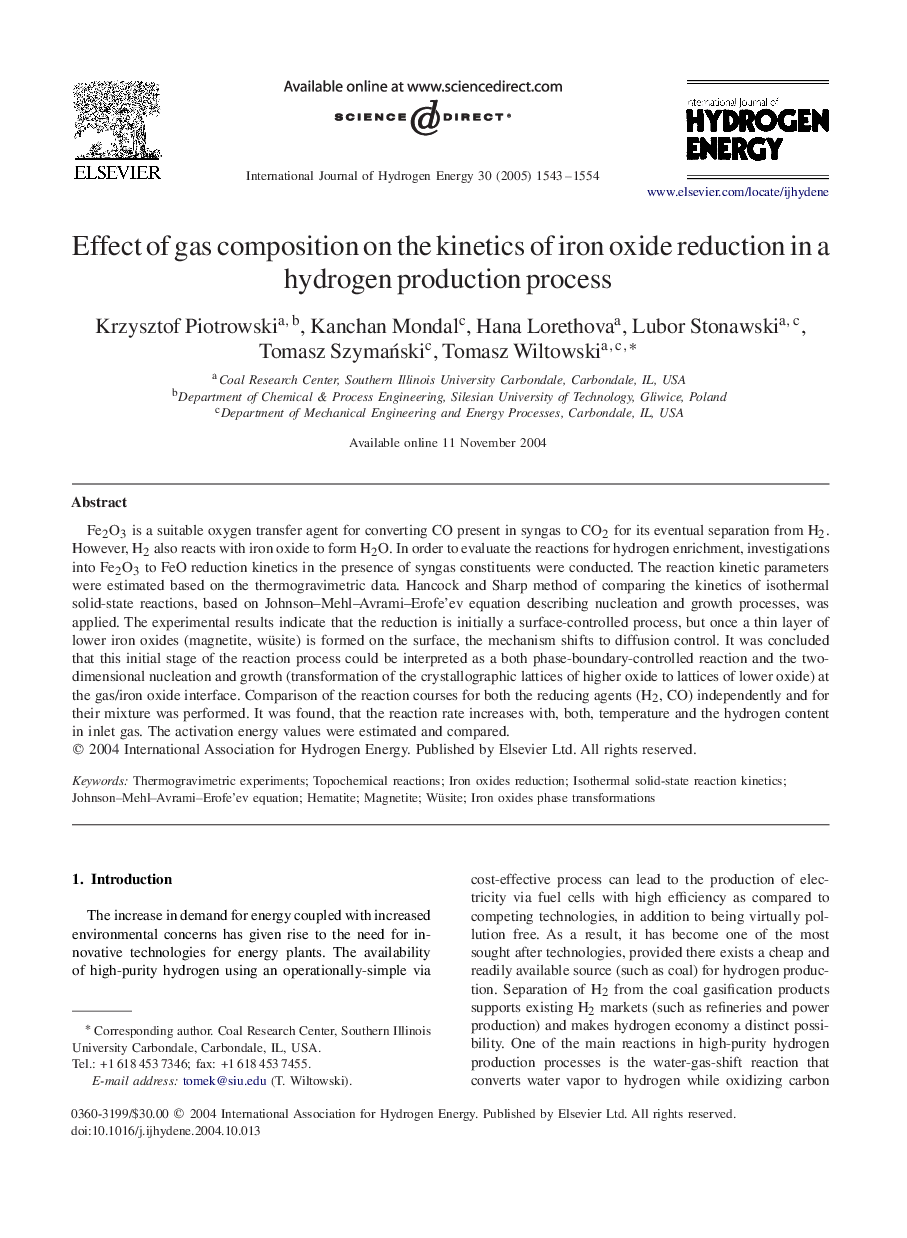| Article ID | Journal | Published Year | Pages | File Type |
|---|---|---|---|---|
| 9759198 | International Journal of Hydrogen Energy | 2005 | 12 Pages |
Abstract
Fe2O3 is a suitable oxygen transfer agent for converting CO present in syngas to CO2 for its eventual separation from H2. However, H2 also reacts with iron oxide to form H2O. In order to evaluate the reactions for hydrogen enrichment, investigations into Fe2O3 to FeO reduction kinetics in the presence of syngas constituents were conducted. The reaction kinetic parameters were estimated based on the thermogravimetric data. Hancock and Sharp method of comparing the kinetics of isothermal solid-state reactions, based on Johnson-Mehl-Avrami-Erofe'ev equation describing nucleation and growth processes, was applied. The experimental results indicate that the reduction is initially a surface-controlled process, but once a thin layer of lower iron oxides (magnetite, wüsite) is formed on the surface, the mechanism shifts to diffusion control. It was concluded that this initial stage of the reaction process could be interpreted as a both phase-boundary-controlled reaction and the two-dimensional nucleation and growth (transformation of the crystallographic lattices of higher oxide to lattices of lower oxide) at the gas/iron oxide interface. Comparison of the reaction courses for both the reducing agents (H2, CO) independently and for their mixture was performed. It was found, that the reaction rate increases with, both, temperature and the hydrogen content in inlet gas. The activation energy values were estimated and compared.
Related Topics
Physical Sciences and Engineering
Chemistry
Electrochemistry
Authors
Krzysztof Piotrowski, Kanchan Mondal, Hana Lorethova, Lubor Stonawski, Tomasz SzymaÅski, Tomasz Wiltowski,
